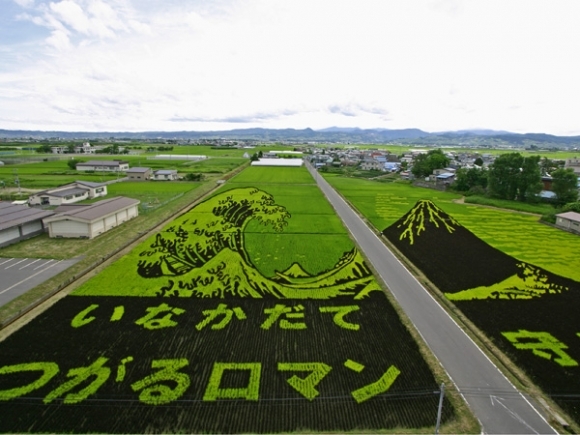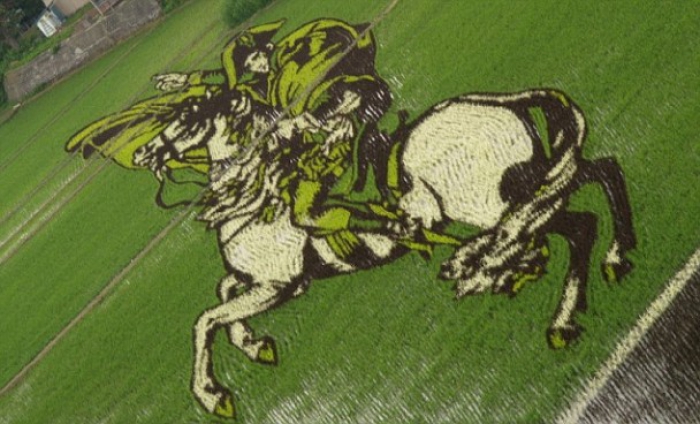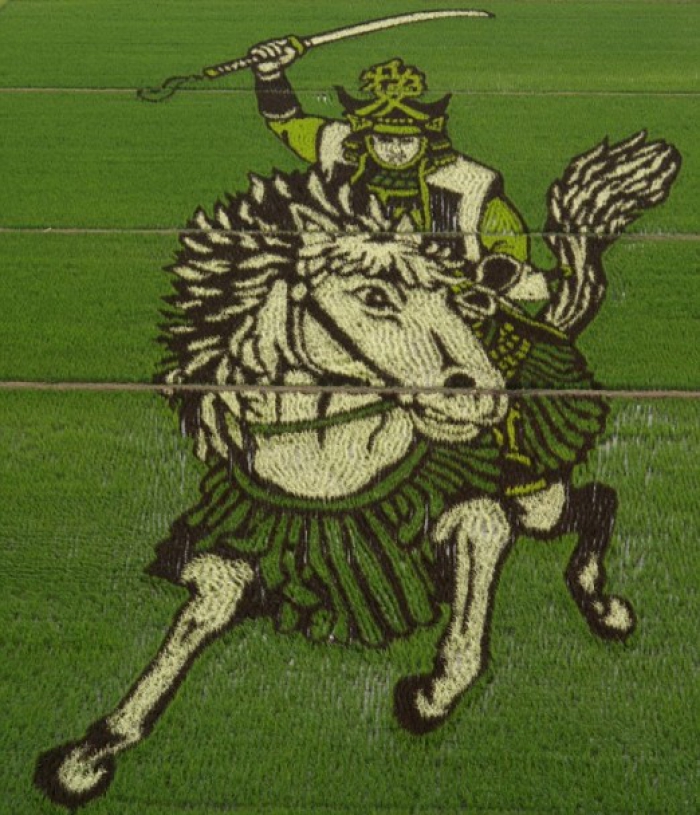
Rice-paddy art was started in the Aomori village of Inakadate, 600 miles north of Toyko in 1993 as a local revitalization project, an idea that grew out of meetings of the village committee.
In the first nine years, the village office workers and local farmers grew a design of Mount Iwaki every year.
But their ideas grew more complicated and attracted more attention. In 2005 agreements between landowners allowed the creation of enormous rice paddy art.
A year later, organisers used computers to precisely plot planting of the four differently colored rice varieties that bring the images to life.
The farmers create the murals by planting little purple and yellow-leafed kodaimai rice along with their local green-leafed tsugaru roman variety to create the coloured patterns between planting and harvesting in September.
The village has now earned a reputation for its agricultural artistry and this year the enormous pictures of Napoleon and a Sengoku-period warrior, both on horseback, are visible in a pair of fields adjacent to the town hall.

More than 150,000 vistors come to Inakadate, where just 8,700 people live, every summer to see the extraordinary murals.
The murals in Inakadate cover 15,000 square metres of paddy fields. From ground level, the designs are invisible, and viewers have to climb the mock castle tower of the village office to get a glimpse of the work.









